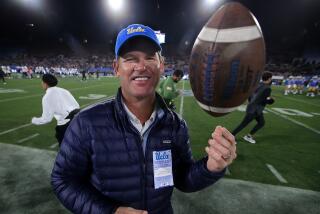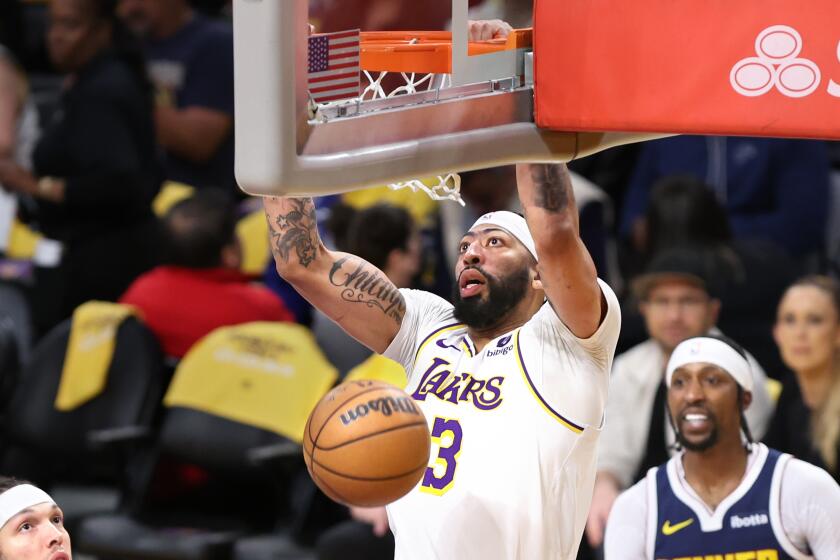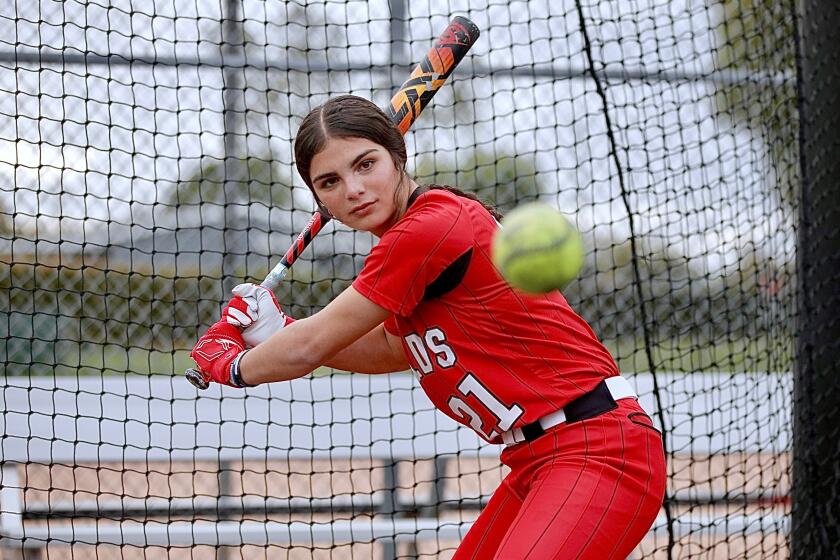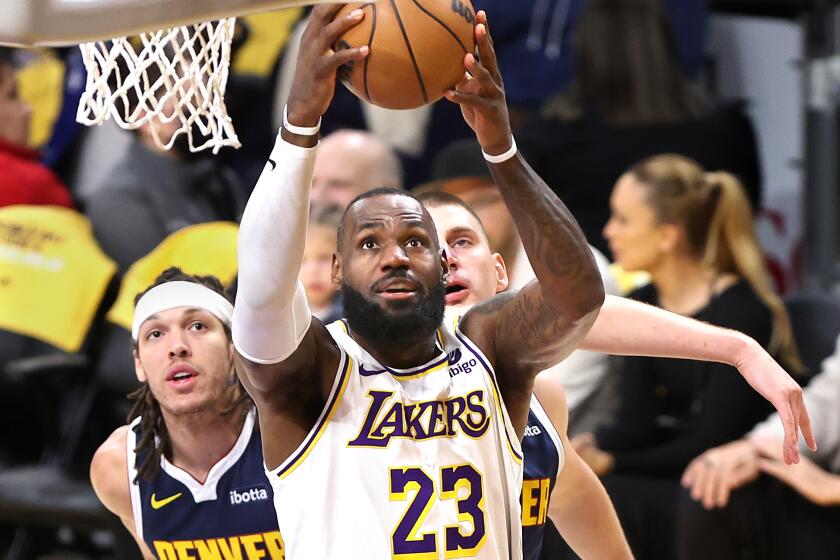Getting the drop is tricky for NFL quarterbacks
All around the NFL, coaches are looking for their quarterbacks to take some big steps backward.
Only then can those players truly move forward.
Teaching young NFL quarterbacks how to properly take a snap from center isn’t a snap at all, coaches say, especially when those players have spent the bulk of their high school and college careers operating out of the shotgun formation.
From coast to coast — from San Francisco’s Colin Kaepernick to Carolina’s Cam Newton — and a lot of places in between, quarterbacks are having to relearn their craft.
“People don’t make a big deal of it, but it’s a big deal,” said Cleveland Browns President Mike Holmgren, a noted quarterback expert who played the position at USC. “When you’re in that college offense that so many schools run, you don’t feel the same kind of pressure you feel when you’re under center.”
Among the young NFL quarterbacks who primarily were in the shotgun on throwing plays in college are Cincinnati’s Andy Dalton, Jacksonville’s Blaine Gabbert, New England’s Ryan Mallett, and last season’s NFL offensive rookie of the year, Sam Bradford of St. Louis.
When he’s snug against the line of scrimmage, as opposed to standing five yards back and having the snap tossed to him, the quarterback’s perspective can change dramatically.
“You don’t even hear the same noise,” Holmgren said. “If you’re of the faint of heart, it would scare you to death.
“When you’re underneath the center, you hear every single thing: the growling, the hitting, the cursing, the spit flying. You’re close. But when you get away from the center . . . that’s why the shotgun is very comfortable for these guys.”
Drop back in the shotgun, and you’re sending a clear message to a defense that you don’t plan to run the ball. You’re also giving up other strategic advantages.
“I like being underneath the center because I can hear the defensive calls,” Browns quarterback Colt McCoy said. “Also, I don’t have to take my hands out from under the center, so the defense doesn’t know when I’m going to snap the ball. I can talk, communicate with the offensive line, especially when I’m doing my cadence.
“In the shotgun, I kind of have to put my hands down, walk up, say something, then get back and get set. Kind of cues a defense.”
It might sound simple, but taking the ball directly from the center then retreating in a three-, five- or seven-step drop — all the while reading what a defense is doing — is an incredibly difficult and complex process, experts say.
“You’ve got big guys around you,” said former NFL quarterback Rich Gannon, voted the league’s most valuable player in 2002. “You’ve got guards pulling. You’ve got people stepping back, people setting. You’ve got to get your feet out of there. You’ve got to sink your butt. There are a lot of different things.”
The most celebrated case of a quarterback struggling to make that transition is happening in Denver, where the Broncos have rolled the dice on 2010 first-round pick Tim Tebow, hoping to transform him from college shotgun star into a pro-style passer.
Gannon sees problems with Tebow’s style even before the quarterback winds up to throw.
“You watch him at the top of his drop and he’s bouncing so much,” Gannon said. “He’s not hitching forward, he’s kind of bouncing in place, moving and sliding. It’s almost like a young Michael Vick who never quite trusted his protection and he’s not quite sure where to go, so you can see it in his feet.”
By contrast, Gannon said, quarterbacks such as New England’s Tom Brady and Indianapolis’ Peyton Manning “are very quiet at the top of their drops.”
Hall of Fame quarterback Steve Young said that if a quarterback has been in the shotgun throughout high school and college, it might be a lost cause to try to start him from scratch when he gets to the pros.
“When a guy hasn’t done it at all, I’d work around it,” Young said. “I’d say that if a quarterback has never been under center, I’d fiddle-faddle with it for a year or two and kind of introduce it, but I wouldn’t force-feed it. It’s that difficult.”
What looks effortless and natural on TV can be a very challenging chore, he said.
“You have to get back seven steps, and you have to move,” Young said. “Your head’s bobbing up and down, and you’ve got to try to track the safeties on the back side. That’s hard.
“When you’re in the gun, you can keep your eyes downfield, you can stay square to the field. It’s just an easier way to go.”
But . . .
“What [the shotgun] really does is it limits your running game,” he said. “A team wants to put in the I-formation? It’s gone.”
Eventually, dropping back becomes second nature. That can take thousands of repetitions, or — in terms of the following analogy from Young — thousands of miles on the football odometer.
“Remember when you started driving, and you got on the outside lane on the highway and thought you were going to die?” he said. “Now, you drive with your knees, with a sandwich, on the phone, and you have the inside lane and you’re honking at everybody.
“It just takes time.”
Gannon recalls drills with the Kansas City Chiefs, when he and three other quarterbacks would line up next to each other and in unison take drop after drop after drop. Four cameras were positioned behind them to capture their footwork. Every step was analyzed.
“When I was in high school, we had to take Latin for four years,” Gannon recalled. “One of the quotes that stuck with me was ‘Repetitio est mater studiorum’ which means ‘repetition is the mother of learning.’ That’s what this is.
“If you haven’t done it, you have to rep it.”
Repetitio est mater studiorum.
But for those quarterbacks struggling to learn under center?
All Greek to them.
twitter.com/LATimesfarmer
More to Read
Get our high school sports newsletter
Prep Rally is devoted to the SoCal high school sports experience, bringing you scores, stories and a behind-the-scenes look at what makes prep sports so popular.
You may occasionally receive promotional content from the Los Angeles Times.







